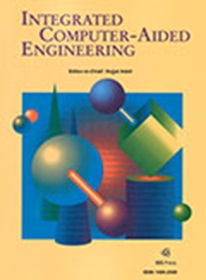Geo-AI通过增强内存的深层水库计算来帮助灾难响应
IF 5.3
2区 计算机科学
Q1 COMPUTER SCIENCE, ARTIFICIAL INTELLIGENCE
引用次数: 9
摘要
事实是,自然灾害经常对生态系统和人类造成严重的破坏。此外,人为灾难会给人们带来巨大的道德和经济后果。一个典型的例子是2020年8月4日在贝鲁特发生的致命的灾难性大爆炸,它摧毁了该市的大片地区。本文介绍了一种地理-人工智能灾害响应计算机视觉系统,该系统能够使用合成孔径雷达(SAR)的材料绘制区域地图。SAR是一种独特的雷达形式,可以穿透云层,在任何天气条件下日夜收集数据。具体来说,文献中首次介绍了记忆增强深度卷积回声状态网络(MA/DCESN),作为一种先进的机器视觉(MAV)架构。它使用了一种基于记忆增强方法的元学习技术。目标是利用深储层计算(DRC)进行域适应。所开发的深度卷积回声状态网络(DCESN)将经典卷积神经网络(CNN)与深度回声状态网络(DESN)以及具有稀疏随机连接的模拟神经元相结合。它的训练遵循递归最小二乘(RLS)方法。此外,外部存储器的集成允许存储来自过去过程的有用数据,同时促进新信息的快速集成,而无需重新培训。提出的DCESN实现了一组关于训练设置、记忆检索机制、寻址技术和为记忆向量分配注意力权重的方法的原始修改。实验表明,整个方法具有显著的稳定性、较高的泛化效率和显著的分类精度,极大地扩展了当前最先进的机器视觉方法。本文章由计算机程序翻译,如有差异,请以英文原文为准。
Geo-AI to aid disaster response by memory-augmented deep reservoir computing
It is a fact that natural disasters often cause severe damage both to ecosystems and humans. Moreover, man-made disasters can have enormous moral and economic consequences for people. A typical example is the large deadly and catastrophic explosion in Beirut on 4 August 2020, which destroyed a very large area of the city. This research paper introduces a Geo-AI disaster response computer vision system, capable to map an area using material from Synthetic Aperture Radar (SAR). SAR is a unique form of radar that can penetrate the clouds and collect data day and night under any weather conditions. Specifically, the Memory-Augmented Deep Convolutional Echo State Network (MA/DCESN) is introduced for the first time in the literature, as an advanced Machine Vision (MAV) architecture. It uses a meta-learning technique, which is based on a memory-augmented approach. The target is the employment of Deep Reservoir Computing (DRC) for domain adaptation. The developed Deep Convolutional Echo State Network (DCESN) combines a classic Convolutional Neural Network (CNN), with a Deep Echo State Network (DESN), and analog neurons with sparse random connections. Its training is performed following the Recursive Least Square (RLS) method. In addition, the integration of external memory allows the storage of useful data from past processes, while facilitating the rapid integration of new information, without the need for retraining. The proposed DCESN implements a set of original modifications regarding training setting, memory retrieval mechanisms, addressing techniques, and ways of assigning attention weights to memory vectors. As it is experimentally shown, the whole approach produces remarkable stability, high generalization efficiency and significant classification accuracy, significantly extending the state-of-the-art Machine Vision methods.
求助全文
通过发布文献求助,成功后即可免费获取论文全文。
去求助
来源期刊

Integrated Computer-Aided Engineering
工程技术-工程:综合
CiteScore
9.90
自引率
21.50%
发文量
21
审稿时长
>12 weeks
期刊介绍:
Integrated Computer-Aided Engineering (ICAE) was founded in 1993. "Based on the premise that interdisciplinary thinking and synergistic collaboration of disciplines can solve complex problems, open new frontiers, and lead to true innovations and breakthroughs, the cornerstone of industrial competitiveness and advancement of the society" as noted in the inaugural issue of the journal.
The focus of ICAE is the integration of leading edge and emerging computer and information technologies for innovative solution of engineering problems. The journal fosters interdisciplinary research and presents a unique forum for innovative computer-aided engineering. It also publishes novel industrial applications of CAE, thus helping to bring new computational paradigms from research labs and classrooms to reality. Areas covered by the journal include (but are not limited to) artificial intelligence, advanced signal processing, biologically inspired computing, cognitive modeling, concurrent engineering, database management, distributed computing, evolutionary computing, fuzzy logic, genetic algorithms, geometric modeling, intelligent and adaptive systems, internet-based technologies, knowledge discovery and engineering, machine learning, mechatronics, mobile computing, multimedia technologies, networking, neural network computing, object-oriented systems, optimization and search, parallel processing, robotics virtual reality, and visualization techniques.
 求助内容:
求助内容: 应助结果提醒方式:
应助结果提醒方式:


